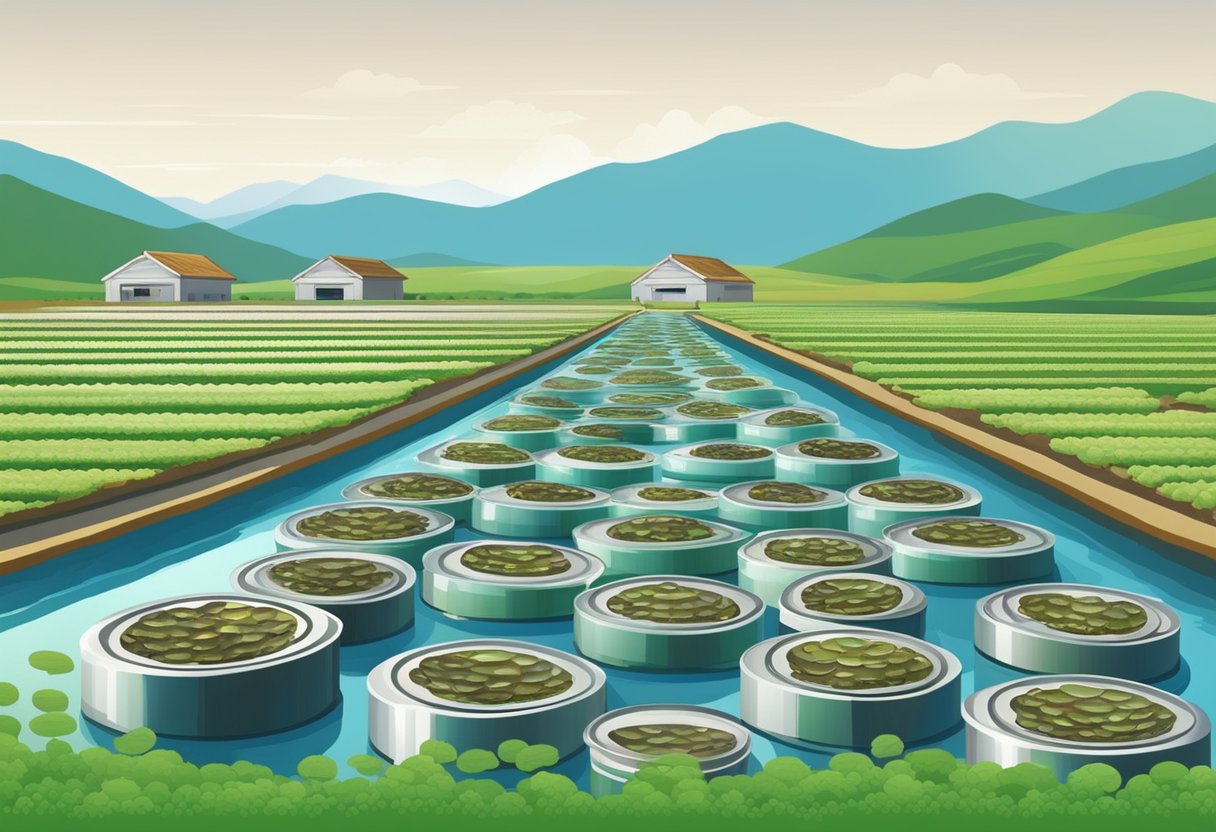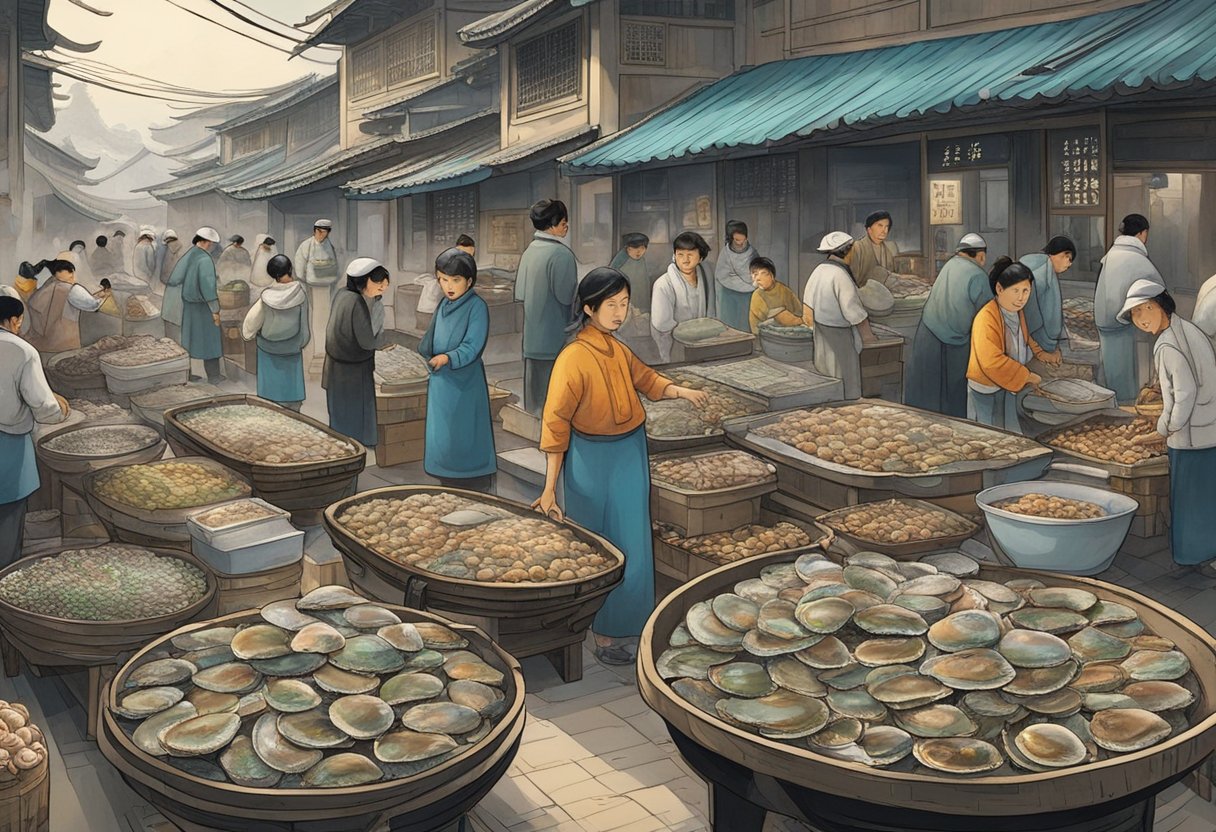Abalone farming has been a significant industry in China for over 15 years, with production in 2018 being 14.5 times greater than in 2003. China is the largest producer of farmed abalone, accounting for 93% of global production. The industry has grown rapidly, with 163,000 metric tons of abalone produced in China in 2018, valued at US$2.8 billion.
Abalone farming has become increasingly important in China, with the industry accounting for nearly 90% of total global production in 2020. The industry has undergone significant changes, with a shift towards green aquaculture. In August 2019, China's largest abalone producer, Fujian China-Singapore Evervest Co., Ltd, became the first in the country to achieve certification under the ASC Abalone Standard.
Despite the growth of the industry, there are still challenges faced by abalone farmers in China. Market dynamics, including fluctuations in demand and prices, can make it difficult for farmers to operate profitably. Additionally, there are concerns about the impact of farming practices on the environment. In this article, we will explore the history and current status of abalone farming in China, as well as the market dynamics and challenges faced by the industry.
Key Takeaways
- China is the largest producer of farmed abalone, accounting for 93% of global production.
- The abalone farming industry in China has grown rapidly, with a shift towards green aquaculture.
- Despite the growth of the industry, there are still challenges faced by abalone farmers in China, including market dynamics and environmental concerns.
Abalone Farming in China

Abalone farming in China has seen significant growth over the past decade, with China accounting for 93% of global farmed production in 2018. The aquaculture industry has developed rapidly, with production in 2018 being 14.5 times greater than in 2003.
Aquaculture Techniques
Abalone farming in China utilizes a variety of aquaculture techniques, including hybridization, mechanization, and technology to improve survival rates and growth rates. The intermediate juvenile culture and grow-out phase are the main stages of abalone culture in China. Larvae nurseries are used to raise abalone larvae, which are then transferred to intermediate juvenile culture tanks where they are grown for several months. The intermediate juvenile culture stage is followed by the grow-out phase, which can last up to two years.
Regional Focus
Abalone farming is concentrated in southern China, particularly in Fujian Province and Lianjiang County. These regions have natural advantages for abalone farming, including suitable climate, water quality, and seaweed resources. Abalone farms in northern China face more challenges due to colder water temperatures and less suitable environmental conditions.
Sustainability and Environmental Impact
The rapid growth of China's abalone aquaculture industry has led to concerns about sustainability and environmental impact. Abalone farms generate solid waste emissions and contribute to carbon sinks, which can have negative effects on the environment. Additionally, natural disasters such as typhoons and red tides can cause abalone mortality and disrupt abalone culture patterns.
To address these concerns, China's abalone aquaculture industry has implemented measures to improve sustainability and environmental protection. These measures include reducing resource use, improving performance, and reducing pollution. The ASC Abalone Standard has been adopted to promote sustainable abalone farming practices, and a traceability system has been established to ensure the safety and quality of abalone products.
Overall, China's abalone aquaculture industry continues to grow and evolve, with a market size of over 160,000 metric tons in 2018. With genetic improvement and hybridization techniques, there is potential for further growth in yield and farm production. The high-end market for abalone products also presents opportunities for increased prices and revenue. However, it is important to balance growth with sustainability and environmental impact to ensure the long-term success of China's abalone farming industry.
Market Dynamics and Challenges

Global Influence and Trade
Abalone is an economically significant shellfish in China's aquaculture industry, and China is the largest producer of abalone in the world. However, the global market for abalone is highly competitive, and many countries also produce abalone, including Japan, Taiwan, South Africa, New Zealand, Australia, Mexico, and Chile.
Global climate change and natural disasters can significantly impact the abalone industry. For example, in California, a severe drought has led to a decline in the population of red abalone. Additionally, abalone diseases such as withering syndrome and abalone herpesvirus have affected abalone populations in many countries.
Illegal trade in abalone is also a significant problem, particularly in South Africa, Australia, and New Zealand. The high demand for abalone has led to overfishing and poaching, which can lead to significant declines in abalone populations.
Innovation and Adaptation
Innovation and adaptation are crucial for the abalone industry to remain competitive and sustainable. Green aquaculture practices, such as using kelp to filter the water and reduce waste, can help to reduce the environmental impact of abalone farming.
In China, innovation has led to significant improvements in abalone farming. For example, on Datan Island, a new attachment methodology has been developed to improve the survival rate of abalone larvae. Additionally, advances in broodstock management and tank hygiene have led to increased production of Haliotis discus hannai, a highly valued abalone species.
Researchers are also investigating the role of diatoms in abalone health and nutrition. Diatoms are a type of algae that can be used to supplement the diet of abalone, which can improve their growth and health.
In conclusion, the abalone industry in China and globally faces many challenges, including natural disasters, abalone diseases, and illegal trade. However, through innovation and adaptation, the industry can remain competitive and sustainable.
Frequently Asked Questions

What's the history behind abalone in Chinese cuisine?
Abalone has been a part of Chinese cuisine for centuries. It was considered a delicacy and was reserved for the wealthy and important people. Abalone was also used in traditional Chinese medicine because it was believed to have healing properties.
How do you prepare traditional abalone dishes in China?
In China, abalone is usually prepared by braising it in a liquid that is flavoured with Chinese herbs and spices. The braising liquid can vary depending on the region and the dish being prepared. Some popular dishes include braised abalone with mushrooms and abalone congee.
What are some popular abalone promotions or festivals in China?
There are several abalone promotions and festivals in China throughout the year. One of the most popular is the Dalian International Abalone Festival, which is held every year in Dalian City. The festival features abalone cooking competitions, abalone tasting, and other cultural activities.
Can you explain the significance of abalone in Chinese culture?
Abalone is considered a symbol of wealth, good fortune, and prosperity in Chinese culture. It is often served at important events such as weddings and business banquets. Abalone is also used in traditional Chinese medicine because it is believed to have healing properties.
What are the differences between wild and farmed abalone in China?
Wild abalone is caught in the ocean, while farmed abalone is raised in tanks or cages. Farmed abalone is usually smaller and less expensive than wild abalone. However, some people prefer the taste of wild abalone because it is considered to be more flavourful.
How has the abalone market in China changed over the years?
The abalone market in China has changed significantly over the years. In the past, abalone was considered a luxury item and was only available to the wealthy. However, with advances in aquaculture technology, abalone is now more widely available and affordable. As a result, the demand for abalone has increased, and it has become a popular ingredient in many Chinese dishes.

